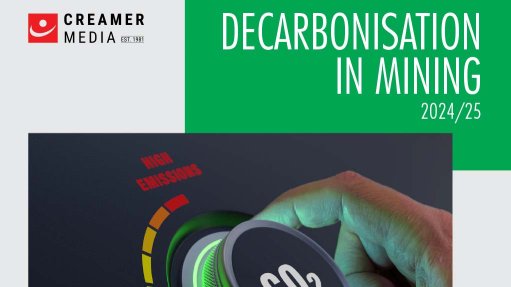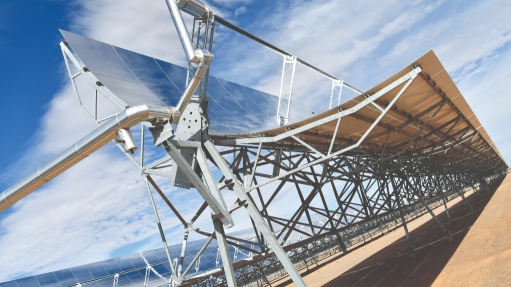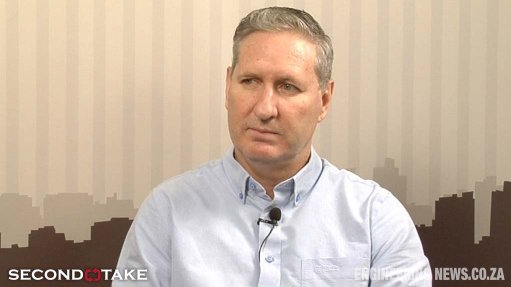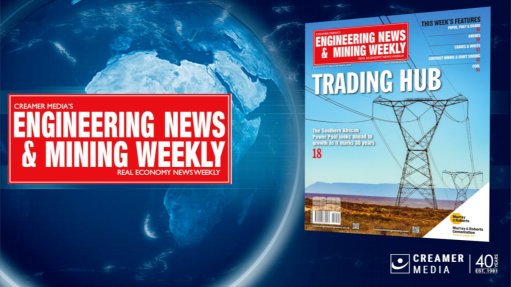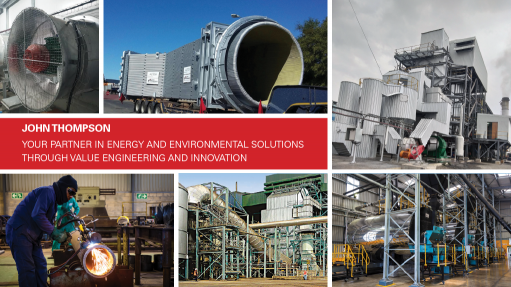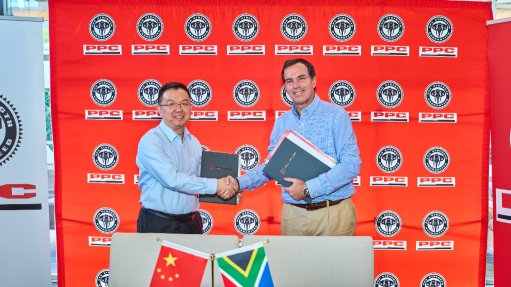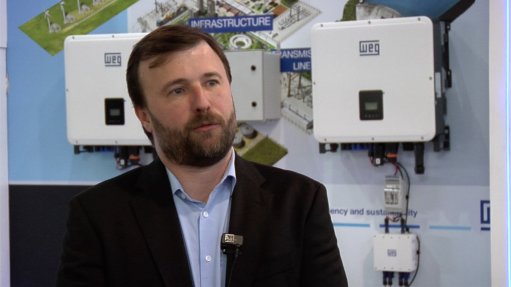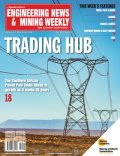Building resilience in extreme environments - the critical role of advanced maintenance for petrochemical equipment
This article has been supplied and will be available for a limited time only on this website.
By: Jurie Erasmus - Project Manager Business Development at ACTOM Turbo Machines
Extreme temperatures, corrosive substances and high pressures are just a few of the elements that make up the unforgiving operational environments characteristic of the petrochemical and oil & gas sectors. Equipment integrity is constantly challenged under these conditions, yet in these high-stakes industries, operational efficiency is critical. Unplanned downtime can have severe consequences, from safety hazards and environmental damage to enormous financial losses and reputational damage.
Given these demanding circumstances, a proactive and nuanced approach to industrial maintenance is no longer optional for organisations; it is an absolute necessity to avoid disruptions and create the right conditions for success. Advanced proactive maintenance reduces downtime, enhances efficiency, and mitigates the risks associated with hazardous substances and fluctuating operational demands.
Acknowledging the growing need for proactive maintenance
Keeping pumps, turbines, and compressors running smoothly is absolutely essential in the oil and gas and petrochemical industries – they're the heart of every operation. However, for the most part, the general approach to industrial maintenance has been short-sighted and based on a "run it till it breaks" mentality, driven by market demand and profits, and exacerbated by the “make a plan” response to operational disruptions.
Operational procedures and maintenance processes, while vital, require a clear understanding of equipment operating conditions and the potential consequences of even minor deviations. Many plants are left struggling to operate and maintain their equipment reliably, simply because the necessary skills to maintain and run these plants are drying up. Skilled fitters and technicians cannot be replaced by machines, and the generation gap has left us with minimal skills to perform these functions accurately, as the skills have not been transferred to the next generation.
From a physical perspective, rotating equipment in harsh environments faces constant threats. Corrosive substances eat away at materials, while temperature swings cause stress. Dust, dirt, and moisture clog components, leading to wear and blockages. Vibrations can cause imbalances and bearing failures. All of these factors can dramatically affect the performance and longevity of rotating equipment. The primary conventional strategies to manage these effects include selecting appropriate materials, applying protective coatings, implementing regular maintenance, along with the use of advanced monitoring systems. Proper design, regular inspections, and incorporating environmental control systems are central to mitigate the risks associated with corrosive environments, temperature fluctuations, and other harsh conditions.
The benefits of proactive maintenance strategies
Proactive maintenance strategies are key to minimising these risks. Downtime is usually a result of equipment breaking down, but the initial cause of the breakdown is only part of the story. The failure itself can trigger a cascade of problems, damaging other parts or even other machines. So, when something fails, fixing the broken part (reactive maintenance) and moving on is not an option. It is necessary to investigate all the contributing factors and every potential knock-on effect.
Proactive maintenance, on the other hand, aims to prevent these failures in the first place. The only real way to minimise downtime and protect profits is by improving overall equipment effectiveness. This usually involves implementing predictive maintenance techniques, such as vibration analysis, thermography, and oil analysis, to identify potential issues before they escalate into major failures.
Keeping an eye on the numbers - the importance of monitoring KPIs
To see if maintenance is performing as it should be, certain Key Performance Indicators (KPIs) must be tracked. These numbers reveal equipment health, the effectiveness of the maintenance plan, and areas for improvement. Important KPIs include Mean Time Between Failures (MTBF), which, when high, signifies reliable equipment and effective preventive maintenance. Mean Time to Repair (MTTR) is also important as a low MTTR indicates fast repairs and short downtime, with Overall Equipment Effectiveness (OEE) providing a holistic view that covers downtime, inefficiencies, and defects.
Maintenance costs assess the value of maintenance spending as a percentage of Replacement Asset Value (RAV). Here, a high failure rate suggests problems with design, operations, or maintenance. Scheduled Maintenance Compliance and spare parts availability are both essential for efficient maintenance operations, while Root Cause Analysis (RCA) helps prevent recurring problems and inefficiencies can be revealed through energy monitoring.
By tracking these KPIs, improvements to maintenance can be identified and implemented to keep things running smoothly. Consistent KPI monitoring is therefore the foundation for optimising maintenance strategies and minimising operational disruptions.
Bringing in technology to simplify proactive maintenance
New technologies are changing how petrochemical plants maintain their equipment. Artificial intelligence and machine learning can analyse vast datasets to identify signals that predict when equipment might fail, plan maintenance schedules, and help make better decisions.
This includes the use of Remote Monitoring and Diagnostics (RM&D) to identify potential failures and even predict how much longer parts will last. Sophisticated algorithms can analyse wear patterns and almost accurately forecast a part's lifespan, allowing plants to order only the necessary spare parts, rather than relying on outdated, generic lists.
Continuous developments in the IoT (Internet of Things) space make it possible for plants to monitor equipment in real time, so that problems can be identified earlier and fixed before they become worse. Robotics can handle repetitive or dangerous maintenance jobs, making tasks safer and more efficient, while augmented and virtual reality (AR and VR) can be used for skills development, helping to train technicians, provide remote support for tricky repairs, and improve the effectiveness of routine inspections.
Proactive maintenance today, operational resilience tomorrow
Petrochemical companies facing the harsh realities of extreme environments can no longer gamble with a "run-to-failure" approach. It's a dangerous game with unsustainable costs and risks. Proactive maintenance isn't just a good idea—it's the bedrock of safe and reliable operations, but it means more than just fixing things when they break. It demands a commitment to the development of a well-trained workforce that is empowered by cutting-edge technologies like predictive maintenance and sophisticated monitoring systems. These investments not only boost reliability, slash risks, and optimise resources (which in turn leads to both improved safety and cost savings), but also set the stage for long-term success and profitability.
Comments
Press Office
Announcements
What's On
Subscribe to improve your user experience...
Option 1 (equivalent of R125 a month):
Receive a weekly copy of Creamer Media's Engineering News & Mining Weekly magazine
(print copy for those in South Africa and e-magazine for those outside of South Africa)
Receive daily email newsletters
Access to full search results
Access archive of magazine back copies
Access to Projects in Progress
Access to ONE Research Report of your choice in PDF format
Option 2 (equivalent of R375 a month):
All benefits from Option 1
PLUS
Access to Creamer Media's Research Channel Africa for ALL Research Reports, in PDF format, on various industrial and mining sectors
including Electricity; Water; Energy Transition; Hydrogen; Roads, Rail and Ports; Coal; Gold; Platinum; Battery Metals; etc.
Already a subscriber?
Forgotten your password?
Receive weekly copy of Creamer Media's Engineering News & Mining Weekly magazine (print copy for those in South Africa and e-magazine for those outside of South Africa)
➕
Recieve daily email newsletters
➕
Access to full search results
➕
Access archive of magazine back copies
➕
Access to Projects in Progress
➕
Access to ONE Research Report of your choice in PDF format
RESEARCH CHANNEL AFRICA
R4500 (equivalent of R375 a month)
SUBSCRIBEAll benefits from Option 1
➕
Access to Creamer Media's Research Channel Africa for ALL Research Reports on various industrial and mining sectors, in PDF format, including on:
Electricity
➕
Water
➕
Energy Transition
➕
Hydrogen
➕
Roads, Rail and Ports
➕
Coal
➕
Gold
➕
Platinum
➕
Battery Metals
➕
etc.
Receive all benefits from Option 1 or Option 2 delivered to numerous people at your company
➕
Multiple User names and Passwords for simultaneous log-ins
➕
Intranet integration access to all in your organisation








